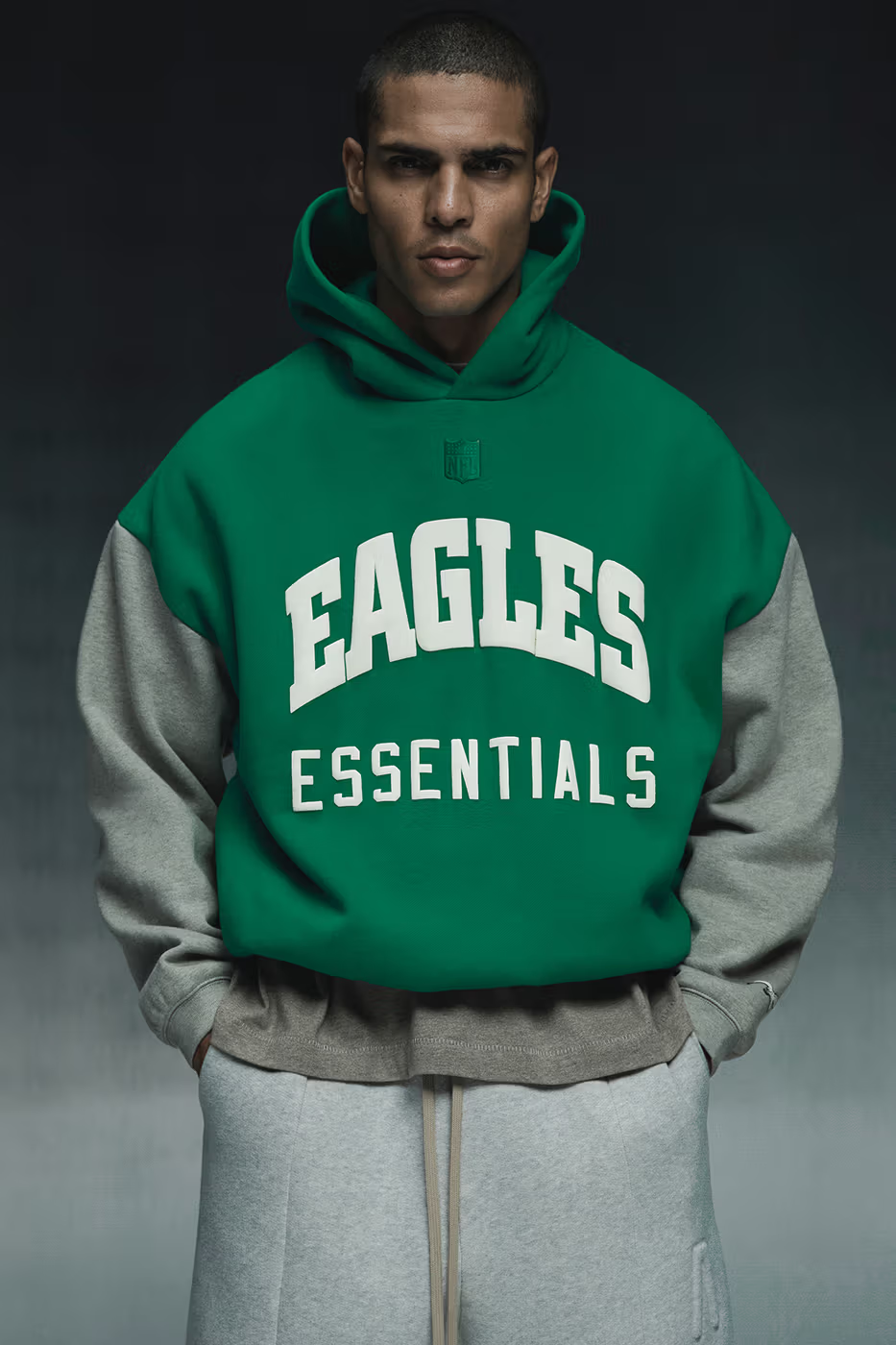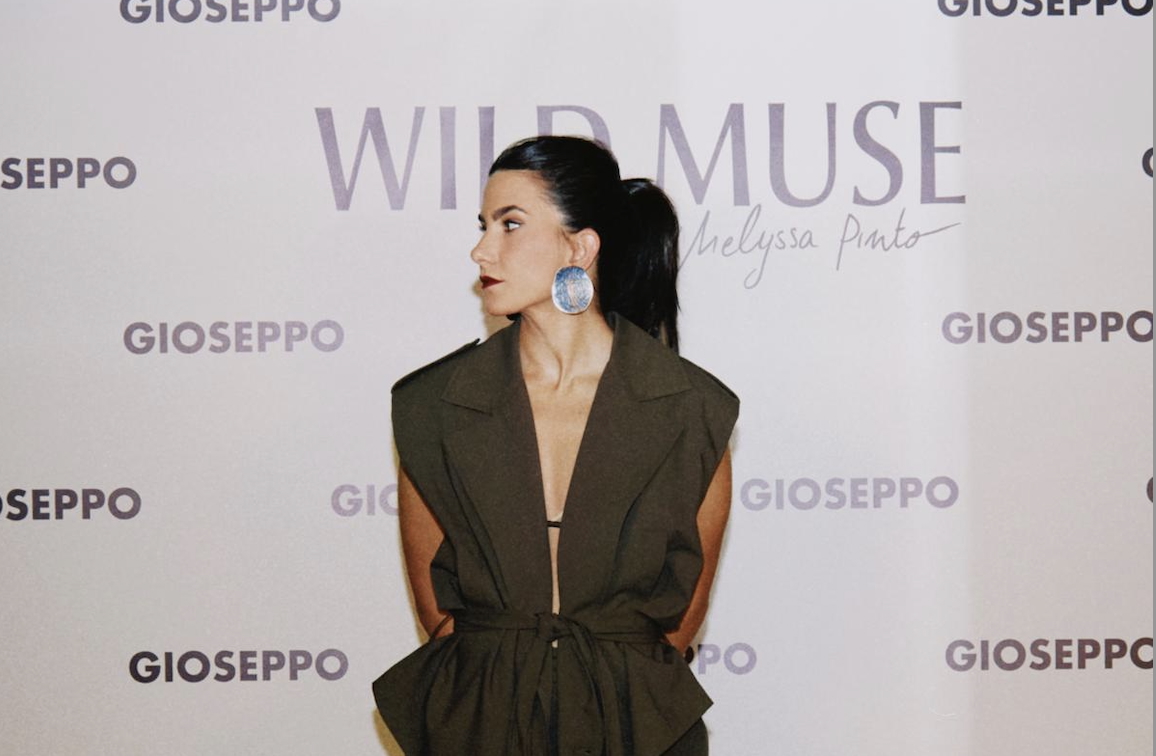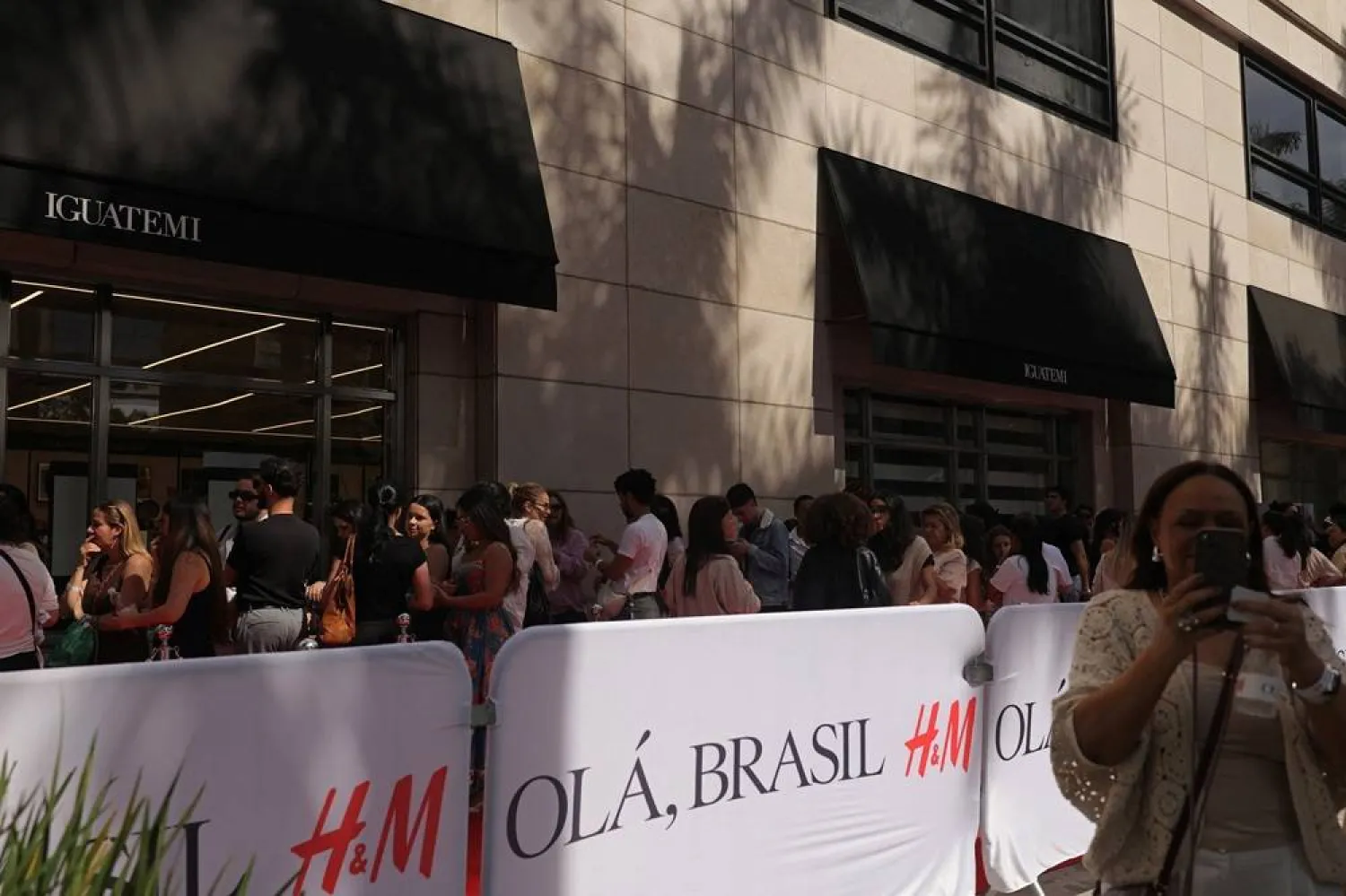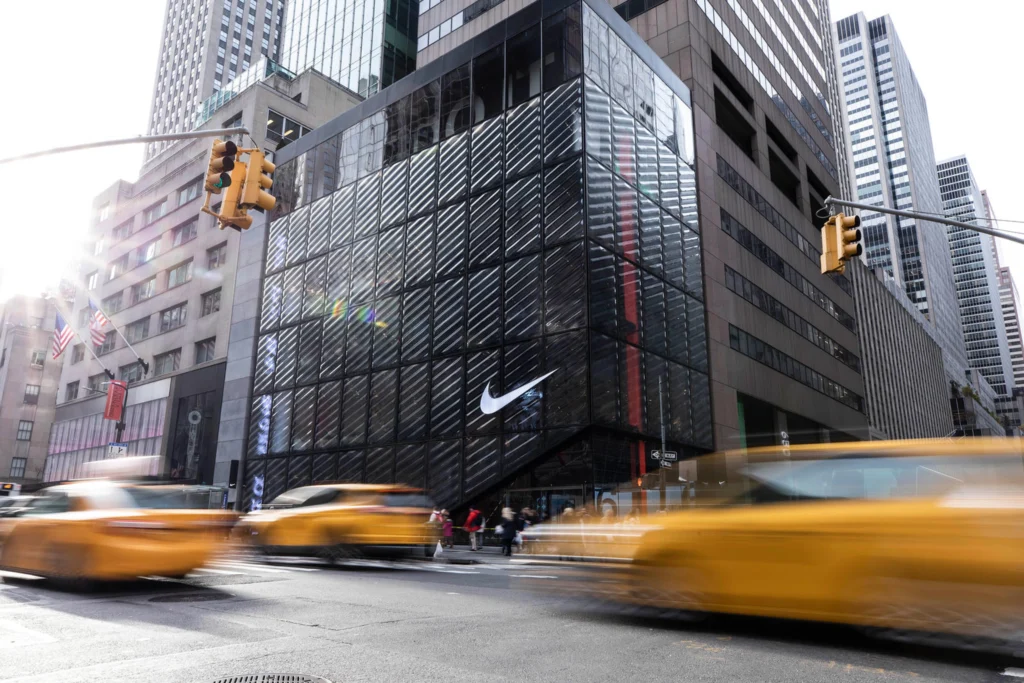
Nike NYC, House of Innovation 000, located at 650 Fifth Avenue, New York City.
A candid insider’s map into how product really gets made in sportswear and why adopting a creative director model would reconnect the pipeline to real consumers.
How product actually gets made in sportswear
In most legacy sportswear organizations, the process begins with the Product Line Management (PLM) function, which sets the seasonal architecture: target volumes, price tiers, margin structure, and SKU mix between hero, update, and carryovers. Design and development teams receive those range plans and execute via sketches, prototypes, material specs, wear-testing, and costing rounds. The process is disciplined, calendar-driven, and optimized for scale and predictability.
This industrial model is effective at moving inventory at pace, but is rarely designed to capture rich consumer insight. The consumer (or “wearer”) is often reduced to the early slides in a trend board or a market snapshot. As soon as the calendar kicks off, decisions shift to cost, timing, and sell-in priorities. That setup builds consistency, but often at the expense of cultural relevance or surprise.
Where the consumer falls out of the process
In practice, the primary feedback loop for product iteration comes from wholesale partners and retail buyers. Their inputs lean toward what has already sold – colorways, cuts, price points – and penalize riskier styles. Designers and PLMs, working under tight deadlines, naturally default to the safer bets. The system thus privileges incrementalism over novelty or innovation.
Compounding that, many chief product or design executives have extraordinarily long tenures, and often with reduced direct exposure to consumers. When product leaders don’t walk retail floors, don’t observe real-world consumer behavior, or don’t sit in communities, the range plan becomes a closed system. The emotional dissonances, latent needs, or emerging microtrends slip through the cracks. The calendar moves ahead but the brand drifts behind culture.
What luxury solved with creative direction
Luxury houses confronted a similar dilemma decades ago and realized the answer lay in centralizing creative authority. The role of a creative director became not only aesthetic lead but cultural translator: someone who knows how to read zeitgeist and express it through product, storytelling, and environment.
Louis Vuitton’s appointment of Pharrell Williams in 2023 sent a signal that culture now belongs in the same seat as craftsmanship. Gucci’s transformation under Alessandro Michele from 2015 onward is now textbook: revenue more than doubled in his early years, and profits tripled as the brand recalibrated its identity. Bottega Veneta’s rise under Daniel Lee demonstrated how a newly sharpened vision can make minimalism once again feel radical.
The value of creative direction is not merely in fresh product, but in coherence: design, marketing, retail, partnerships, and storytelling all speak from the same vocabulary. That unity is precisely what many sportswear brands have lost.
Sportswear already has precedents, just not enough of them
There are wins to point at. New Balance named Teddy Santis creative director of its Made in USA line, and the narrative grew sharper, drop formats more curated, and community resonance higher. Adidas Basketball’s tie-up with Jerry Lorenzo has blurred boundaries between performance and lifestyle while giving adidas a voice among street culture creators. Under Armour’s move to bring John Varvatos in as a top design executive marked a pivot toward higher sensibility in silhouette and brand language. Since then, the brand added sportswear veteran Yasine Saidi, ex-PUMA Head of Select and cultural catalyst as Chief Product Officer. adidas also recently installed Alasdhair Willis as Chief Creative Officer part of a broader push to align Originals, Performance, and Sportswear divisions.
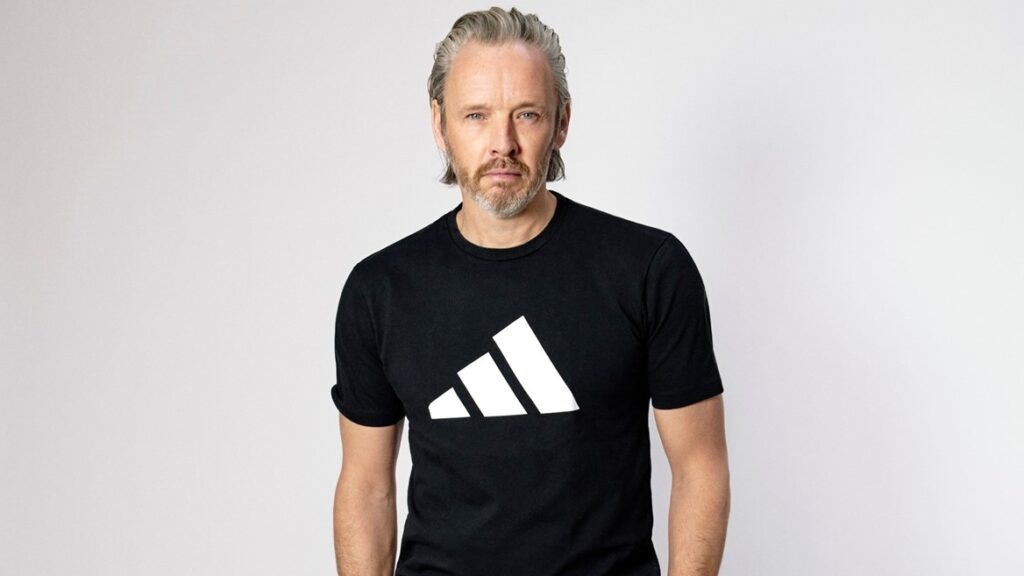
Alasdhair Willis, adidas Chief Creative Officer
But these efforts succeed only where the creative leader is granted real power to influence narrative, volume, and positioning. Without authority to kill or elevate SKU decisions, the creative title becomes decoration.
When Creative Direction Meets Celebrity Power
Celebrity partnerships have long been the quick fix for sportswear’s relevance problem. From athletes to artists, brands have turned to star power to inject energy into predictable seasonal calendars. It works … for a while. But without creative infrastructure behind it, endorsement culture tends to deliver heat, not heritage.
Rihanna’s collaboration with PUMA remains the clearest example of what happens when celebrity meets structure. Appointed Creative Director for Women’s in 2014, she wasn’t simply fronting campaigns; she was shaping the product, styling, and storytelling around her own worldview. The result was FENTY PUMA, a collision of sport, street, and femininity that helped PUMA double its women’s business within three years and reposition the brand globally. Her role blurred the lines between ambassador and architect.
Bad Bunny’s partnership with Adidas shows a similar spark. His Forum and Campus lines brought Latin street culture into the Originals universe, re-energizing a brand that had grown overly dependent on retro silhouettes. Adidas reported consistent double-digit growth in Originals in the quarters following his releases, proof that cultural alignment can still move product. But even here, the collaboration sits as an isolated chapter within a wider system. The influence is potent but narrow; it doesn’t redefine the brand’s long-term creative direction.
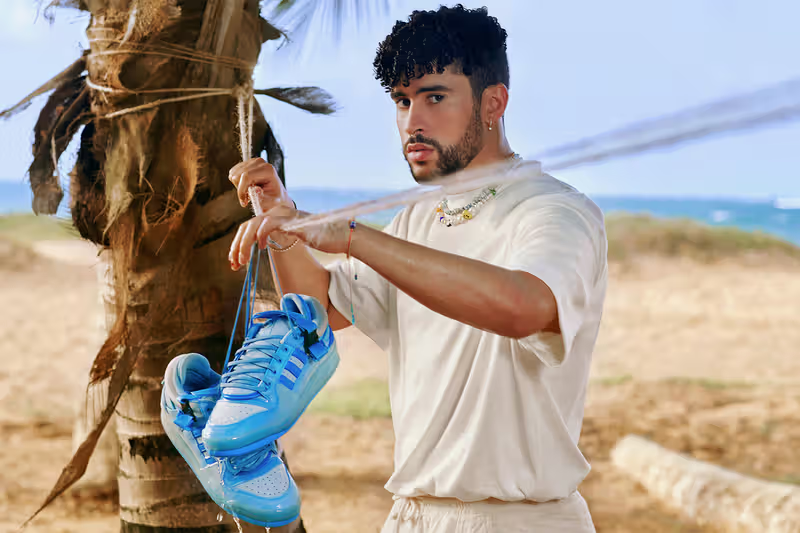
Adidas x Bad Bunny Forum Low Collab. Image credit – adidas.
Nike’s relationship with Travis Scott demonstrates both the upside and the ceiling of celebrity power. His Cactus Jack editions of the Air Jordan 1 and Air Force 1 regularly sell out in minutes, driving resale premiums that exceed 600%. Yet their impact lives within the sneaker subculture, not the brand’s broader identity. Travis Scott amplifies Nike’s existing mythology, he doesn’t write a new one.
The inverse lesson comes from Beyoncé’s Ivy Park partnership with adidas. Despite global attention, the collaboration underperformed commercially and ended in 2023. Reports cited creative misalignment and lack of clarity around audience and product direction. The message was clear: celebrity alone can’t compensate for weak creative governance.
And let’s not even discuss the adidas and Yeezy huge success, followed by a dramatic downfall.
This is where the creative director figure becomes indispensable. A creative director defines the overarching narrative that gives collaborations coherence, ensuring every partnership extends the brand’s world instead of fragmenting it. They decide which cultural voices belong inside the ecosystem, and how each capsule connects to the core brand story. Without that structure, even the most famous name risks becoming a one-off hype cycle rather than a driver of brand equity.
In the immediate future, success for sportswear brands will depend less on who a brand partners with and more on how those partnerships are architected. Future growth won’t be just about endorsements, but about creative integration when visionaries inside and outside the brand operate from the same playbook. That’s when culture really compounds.
The case for hiring creative directors in sportswear
What stands in the way is not lack of talent but structure. A sportswear creative director would re-center the consumer in every conversation, from PLM kickoff to color finalization. They would steward brands with courage: when to evolve, when to pause, when to jump, not merely hedge. They would unify voice across apparel, footwear, retail language, and storytelling. Above all, they would transform collaboration from stunt to discipline.
The data suggest urgency. In 2024, Adidas’ brand net sales grew 12% year over year, and operating profit leapt by 58%, yielding a 9.2% operating margin. As Nike’s share of the global sportswear market fell from 15.2% to 14.1% (while Adidas gained ground) in that same period, the question becomes less about brand strength and more about relevance. Brands that can assert vision not only scale, but are winning long term.
View this post on Instagram
What to change on day one
If a sportswear brand is serious about creative leadership, the solution is not to dismantle its operational core. The Product Line Management (PLM) model is the industry’s backbone – it ensures commercial balance, pricing architecture, and delivery discipline. What’s missing is a creative counterweight with equal influence at the strategic level.
A creative director doesn’t need to sit in every meeting, approve every SKU, or sign off on every outsole colorway. That’s how burnout – and bureaucracy – happens. Instead, they should define the north star, the thematic and cultural direction that informs the range plan before it’s built. The PLM team then executes within that framework, translating creative intent into commercial structure.
In this model, the creative director leads the “why,” while PLM owns the “how much” and “how often.” The dialogue between the two becomes the brand’s engine, with vision anchored by volume, storytelling balanced by sell-through. When it works, it bridges creativity and commerce in real time, ensuring that innovation doesn’t fall apart in the handover between teams.
The model doesn’t eliminate process; it humanizes it. The creative director should be present in key milestone meetings like seasonal kickoffs, range reviews, storytelling sign-offs, not every calendar checkpoint. Their mandate is to ensure that every collection ladders up to the same narrative thread and consumer truth.
The biggest change, then, isn’t logistical, it’s cultural. And this is the key to many legacy brands lose relevance these days : brands must shift from seeing creativity as decoration to seeing it as direction. The creative director’s role is to inject perspective early enough to shape decisions, not late enough to polish outcomes.
Who to hire
The right hire isn’t someone exotic or disconnected. It’s a builder, someone who has created a brand, earned trust in a community, and led with both vision and execution. The Ronnie Fiegs, Jerry Lorenzos, and Teddy Santises occupy this intersection of creator and operator. Someone like George Heaton, founder of Represent, who understands deeply what it means to build audience and IP. A sportswear brand that taps that kind of voice intelligently can shift from being a maker to being a meaning brand.
The bottom line
Sportswear doesn’t have a creativity problem. It has a structural one. The system is optimized for safety, not surprise. But culture moves faster than range plans. The brands that win going forward will be those that put a creative director in the room, not as a token, but as the anchor between the consumer’s pulse and the seasonal plan. Legacy in sportswear is not ensured by volume; it’s earned through voice.

